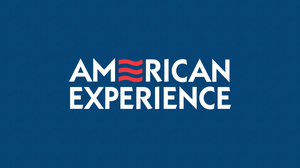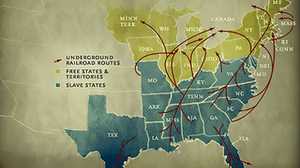Civil War Photographers
Mathew Brady
Mathew Brady's legacy is synonymous with the photographic legacy of the Civil War. While he did not take every photograph of the war himself (much of this was left to the many camera operators he employed) he is still widely regarded as the conflict's master chronicler.
He was born to poor Irish parents in Warren County, New York, in 1823. Brady was 15 years old when he met William Page, the American portrait painter, in Saratoga Springs. Page instructed him in portraiture and in 1841 brought him to New York City to study with Samuel F.B. Morse, painter and scientist/inventor, at the National Academy of Design. It was there that Brady was introduced to daguerreotypy, an early photographic process, and within several years he had opened his own studio on Broadway. Brady was eager to establish his business and sought out the notable people of his day to pose for him. Once the war began, Brady was well established as one of the most prestigious photographers in America. He felt his position gave him a certain responsibility to document the war; he recalled, "a spirit in me said 'go' and I went." Every photograph taken by one of his staff was marked "Photo by Brady" and garnered him widespread renown. Yet the expensive photographic processes and the rugged nature of camp life severely drained his fortune and left him nearly bankrupt at war's end. The U.S. government purchased many of his plates in an auction. In 1875, Congress paid Brady $25,000 for full title to his Civil War images. A kidney condition finally forced Brady's hospitalization in 1895, and on January 15th of the following year, he died alone and largely forgotten. He was, however, buried at Arlington Cemetery, in an effort to honor him among the Civil War heroes he had photographed.
Alexander Gardner
Alexander Gardner owned one of the few galleries which rivaled Mathew Brady's in illustrious clientele and prestige. He was Scottish-born and emigrated to
New York in 1856 when he was 35 years old. Once there, he found employment in Brady's studio, where he introduced the Woodward solar camera, which allowed for the enlargement of photographic portraits. He was manager of Brady's gallery in Washington, D.C., until 1862, when he left to enter the business of mass-producing carte de visitephotographs (small photographic portraits used as calling cards). Early in the war, Gardner was the official photographer of the Army of the Potomac, after which he established his own galleries in Washington and New York. Among Gardner's distinguished sitters were President Lincoln and his secretaries, John G. Nicolay and John Hay. Gardner's portraits of Lincoln and his son, Tad, taken in April of 1865, were the last before the President's death. He also documented Lincoln's funeral and the execution of the assassination conspirators. Soon after the war, Gardner published his Photographic Sketch Book of the Civil War, closed his Washington gallery, and went West to photograph the route of the Union Pacific Railroad. It was at this time that he captured some of the most renowned scenes of westward expansion as card stereograph views. By 1873 he had set up the first Rogues' Gallery at the Metropolitan Police headquarters in Washington and continued to be active until he died in 1882 of what physicians diagnosed as "an obscure disease."
Timothy O'Sullivan
Timothy O'Sullivan spent his early career working for the two most prestigious photographers in the country, Alexander Gardner and Mathew Brady. It was during his stint with Brady that O'Sullivan first learned the daguerreotype process. In 1863, when he was only 23 years old, O'Sullivan was working as one of Brady's field operators at the Battle of Gettysburg. The photographs he took at this event, though attributed to Brady when published in Harper's Weekly, were some of the most provocative and influential of the war. Indeed, they provided inspiration for Lincoln's Gettysburg Address. O'Sullivan spent the remainder of the war as Gardner's superintendent of field and map work for the Army of the Potomac. The year 1867 marked the beginning of a three-year assignment as photographer with the first government geological survey teams to explore the 40th Parallel. He traveled through Nevada, Wyoming, and Colorado, photographing life in the West. Afterward, O'Sullivan became the official photographer of a survey of possible routes for the Panama Canal. Ever active, he was photographing the 100th Meridian and the Native American populations in Arizona and New Mexico by 1871. When he applied for the position of photographer for the Treasury Department, O'Sullivan was accomplished in his own right, and both Brady and Gardner wrote letters of recommendation. Yet O'Sullivan did not serve in this position long; he contracted tuberculosis and died two years later, in 1882, at the age of 42.







